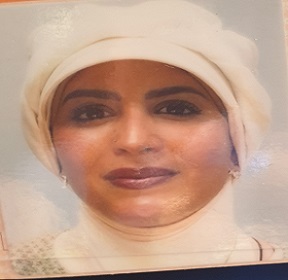Scientific Program
Keynote Session:
Title: Forensic aspects of hypoglycaemia
Biography:
Derek Beatty gained his BSc in Biological Science & Business Studies, Edinburgh University, 1972, and his Diploma in Marketing, Slough College, 1977. He has been a Director of Aston Clinton Scientific Ltd since 1997 supplying respiratory nebulisers and specialising in diabetes. He is a Consultant to PolyPhotonix Medical. He recently founded Mobile MedTech Ltd to offer a Mobile Diabetes Service in Scotland involving NHS Scotland with experience in the team launching Europe’s First Mobile MRI Service in 1990. He has had T1D for 40 years and overcome diabetic retinopathy. Published featured articles include ‘Shared Mobile Services’ Medical Focus 1990; ‘Sharing in Caring’ The Health Service Journal, 1990; ‘Shared Mobile Services Save Money for Providers’, European Congress of Radiology, Vienna 1991; ‘Mobile MRI, Safety and Operational Guidelines’ 1992; ‘A Listening Ear’ 2017; www. DRI-FT.co.uk Diabetes Research Information – Facts for Treatment.
Abstract:
Diabetes complications of hypoglycaemia, hypoglycaemia unawareness and neuroglycopenia are often encountered by patients treated with insulin. It is feared by patients and families often leading to emotional and mental scars and can affect lifestyle and confidence. Hypoglycaemia can occur in premature babies, persons with hypopituitarism and Addison’s Disease. Low blood glucose can affect athletes and the elderly leading to falls. Cases are individual and often difficult for families, clinicians, lawyers and courts to understand. Temporary mental impairment and PTSD injury may occur requiring counselling to overcome hypoglycaemia. 40 years T1D insulin treatment and personal hypoglycaemia experience following wrong insulin care 1987 - 94 led the author to research published reports. The first hypoglycaemic event was described by Banting, Best and Macleod at the time of insulin discovery as a treatment for diabetes in 1921/22. This review includes observations from ‘Forensic Aspects of Hypoglycaemia’ by Prof Vincent Marks, 629 case references, February 2019. Complications affecting stable Blood Glucose levels include Otitis Externa, Osteomyelitis, Neuropathy pain, infection treatment by IV antibiotic delivery, periodontal dental link with gum disease, inflammation, chemical change reducing insulin effectiveness, calcium stones in the saliva duct, sodium, calcium, magnesium electrolyte imbalance, Omega 3 deficiency, night saliva duct cortisol secretion, depression.Use of insulin and C Peptide assay is beneficial in forensic investigations following unexplained death or insulin use as a weapon in alleged criminal matters. Society can learn from this research to provide improved diabetes care for patients to achieve good health and long life despite the daily burden of managing a condition with no cure.A duty of care exists to a person in a state of hypoglycaemia to summons paramedic help when the person is unable to help themselves because of temporary mental hypoglycaemia.
Title: Efficacy of different prediabetes program models in improving clinical outcomes in people with prediabetes
Biography:
Rasha Yousef Al-Hamdan. I graduated from king Saud University, College of Applied Medical Science, Riyadh, Saudi Arabia, with Bachelor degree of 4,47/5 in Clinical Nutrition since 2001. I worked in my field as a dietitian in the private and government sectors.
Abstract:
Background: Educational programs in general seem to have a clinically significant beneficial effect among the T2DM population in terms of improved glycaemic control. However, few evaluations of interventions to delay or prevent type 2 diabetes mellitus (T2DM) in Saudi Arabia (SA) have been undertaken.
Objective: The present study evaluates for the first time, the differences in the effectiveness of the different educational programs [intensive lifestyle modification (Group Education Program, GEP), supervised education through social media (WhatsApp Education Group, WEP) and standard care via PHCCs (Control Group, CG)], among Saudi females with pre-diabetes.
Methods: This was a 6-month, multi-center, 3-arm cluster, randomised, controlled (1:1:1), multi-intervention study conducted from July 2018 until March of 2019 in Riyadh, SA. A total of 1140 females from SA were cluster randomised equally to three groups, out of which only 253 [N=100 GEP, N=84 WEP and N=69 CG] received intervention. Participants completed questionnaires including demographic, dietary and physical activity data. Anthropometrics, blood samples and dietary intake were collected at baseline and 6 months. A total of 120 [37 CG (age 50.9±7.1 years; body mass index (BMI) 31.6±5.8kg/m2), 40 GEP (age 42.9±12.2 years; BMI 34.8±9.0kg/m2) and 43 WEP (age 43.7±8.1 years; BMI 30±5.1kg/m2)] participants completed the study.
Results: Haemoglobin A1c (HbA1c; primary endpoint) significantly improved in all groups over time, with no difference in between-group comparisons. Between group comparisons adjusted for age revealed a clinically significant reduction in BMI in favour of GEP (p=0.02) post-intervention. A clinically significant reduction was also observed in favour of GEP in terms of weight (p=0.003), waist circumference (p=0.017), systolic and diastolic blood pressure (p-values <0.01), triglycerides (p<0.001) and caloric intake (p<0.005) over time.
Conclusion: Prediabetes education programs of 6-month duration, whether delivered through an intensive lifestyle modification, social media or standard care, are equally efficacious in improving HbA1c levels among Saudi women with prediabetes, but intensive lifestyle is superior in terms of weight reduction and over-all cardiometabolic improvement.
Title: The associations of total physical activity intensity and insulin resistance syndromes in obese adults
Biography:
Fatema Al-rashed, Ph.D, is a post-doc researcher at the immunology unit of dasman diabetes institute in Kuwait. She hold a B.Sc in Microbiology with immunology from Leeds University , and both MRes and a Ph.D in biomedical science from Glasgow and Nottingham University, respectively . From 2005 to 2010 she worked as medical technician at the immunology unit of Mubarak al Kabeer hospital, Kuwait. And after obtaining her Ph.D in 2016 she decided to switch to research were here research interests span both lipotoxicity and para-inflammation. Much of her work has been on improving the understanding, design, and performance of lipid metabolism, mainly through controlling bioactive lipids and the manipulation of nuclear factors regulators. Before joining Dasman diabetes institute, her research examined the impact of phycology on insulin sensitivity. After joining Dasman diabetes instituete, her work has focused on the impact of obesity in obesity and diabetes related inflammation. She has explored the effect of bioactive lipids in obesity induced inflammation. In 2017 she received L'OréalUNESCO For Women in Science award, for her research on the effect of lipid metabolites in monocytic lipotoxicity and inflammatory responses.
Abstract:
Background: The association between obesity and insulin resistance syndromes (IRS) has long been established (1-2). Nevertheless, limited data regarding the effect of physical activity (PA) intensity and its ability to modulate IRS. We aim to determine whether obese individuals would benefit more from engaging in light activity throughout the day compared to single bout of acute exercise of moderate or vigorous activity for a shorter period per day
Methods: A total of 60 obese participants with a BMI ≥ 30 (30 males and 30 females) were enrolled for this study. Activity levels were measured through an accelerometer worn except when bathing for seven consecutive days. Habitual activities were self-reported, and fasting glucose, insulin, and lipid profile were measured. Monocytic inflammatory markers expression was analyzed by flow cytometry analysis and cytokines secretion was investigated by ELISA. Multiple regressions controlling for significant variables in univariate regression were performed to evaluate the association between the actigraphy-assessed activity measures, inflammatory cytokines, and insulin resistance.
Results: The percentage of total individual activity showed a significant negative correlation to lower lipid profile, HOMA-IR and monocytes inflammatory production. A higher daily percentage of moderate to vigorous physical activities was significantly negatively correlated with body fat percentage, yet, only high volume of total activity and total light activity throughout the day seemed beneficial for better insulin sensitivity (light % P= 0.0042, r= -0.377; moderate % P= 0.962, r= 0.064; vigorous % P= 0.923, r= 0.013). Total physical activity had positive correlation to monocytic expression of M2 marker regardless of physical intensity. Yet, only higher volume of light activity was found negatively correlated to the surface expression of nonclassical monocyte expression (CD14dim CD16++; P =0.01, r = -0.48). in a similar manner all intensities of physical activities were shown to associate negatively with TNF-a secretion. Yet, only IL-17A and MCP-1 were found significantly negatively associated with higher volume of lighter activity through the day.
Conclusions: Maintaining general light movements throughout the day can be beneficial when compared to a short period of stringent workout. This provides a better understanding of how to implement effective approaches to lifestyle change in preventing IRS and T2D.
Â
Title: Evaluation and comparasion of the diagnostic accuracy, clinical utility of Indian Diabetes Risk Score (IDRS) and Finnish Diabetes Risk Score (FINDRISC) in detecting undiagnosed T2DM
Biography:
Dr. Sheikh Mohd Saleem was born in Srinagar, Jammu & Kashmir, India. Did his college from the most prestigious school of the Kashmir Valley i.e. Tyndale Biscoe school. He continued his Medical Education at Jahurul Islam Medical College affiliated with University of Dhaka, Bangladesh. Then He did his houseman ship at the Postgraduate Department of Surgery, Government Medical College and Associated SMHS Hospital, Srinagar and Department of Pediatrics, Bhagwan Mahavir Hospital, New Delhi, India respectively. He further continued his postgraduate education at Government Medical College, Srinagar in the Department of Community Medicine. He continued his research work there and published his thesis on the “Prevalence of Type 2 diabetes mellitus among adult population of district Srinagar”. Beside these, He attended many national and International conferences, national workshops, epidemiological investigations, door to door surveys, and was involved in many projects of public health importance. Dr. Sheikh Mohd Saleem has 45 research publications in various national and international journals. He has received 3 awards for best poster presentation at various national conferences, best thesis award for the year 2017 at Government Medical College, Srinagar, Star of the Year award 2017 for highest contribution to public health activities from the Department of Community Medicine, Government medical college, Srinagar. He also received Indian Health Professional Excellence in Community Medicine award in the Year 2019. Furthermore, He received National IAPSM presidential award for the contribution and service to IAPSM and Community Medicine field. During 46th National IAPSM Conference held at Shimla in 2019, He received National Kalu Ram Memorial Award for best oral paper presentation during the conference.
Abstract:
Background: Diabetes mellitus (DM) affects around 8.3% of world’s adult population, and World health organization has predicted the total number of cases of DM to rise from 371 million in 2012 to 552 million in 2030 [1]. Among DM cases, more than 90% of patients have type 2 diabetes mellitus (T2DM), and over 50% of cases are undetected [1]. Hence, there is an emergent need of effective screening instrument to identify “diabetes risk” individuals. Aims: To evaluate and compare the diagnostic accuracy and clinical utility of Indian Diabetes Risk Score (IDRS) and Finnish Diabetes Risk Score (FINDRISC) in detecting undiagnosed T2DM among Kashmiri population.
Settings and Design: This was a cross sectional study carried out on 1530 individuals attending outpatient department of a primary health centre from January 2018 to July 2019.
Subjects and Methods: Each participant was selected using systematic sampling where every third adult patient (age >20 years) attending the Outpatient department of primary health care center was included in the study. Participants with known DM and pregnant women were excluded from the study. We used Finnish Diabetes Risk Score (FINDRISC) and Indian Diabetes Risk Score (IDRS). Total Score of each participant was analysed and compared. After that followed the random blood glucose estimation of each individual.
Statistical Analysis Used: Diagnostic accuracy of IDRS and FINDRISC compared by using receiver operative characteristic curve (ROC). Sensitivity, specificity, likelihood ratio, positive predictive and negative predictive values were compared. Clinical utility index (CUI) of each score also compared.
Results: Out of 1530 individuals, 157 were new diabetics. Odds ratio for high-risk people in FINDRISC for getting affected by diabetes was 12.10. Similarly, it was 6.27 for IDRS. On ROC, area under curves of both scores were indifferent (P = 0.78). IDRS was better sensitivity than FINDRISC while specificity of FINDRISC was found to be higher than IDRS. Bland-Altman plot and Cohen’s Kappa suggested fair agreement between these score in measuring diabetes risk. Conclusions: Diagnostic accuracy and clinical utility of FINDRISC is fairly good than IDRS in Kashmiri Population.
Title: The study of Platelets behavior in Type 2 Diabetes mellitus environment via continuous ADP stimulation
Biography:
razie mahmoodian is finished her Hematology and Blood bank,MSc in Shahid Beheshti University of Medical Sciences and Health Services
Abstract:
Patients with type 2 diabetes mellitus (T2DM) have accelerated atherosclerosis as a prothrombotic state that is associated with priming of platelet activation. Platelets undergoing continuous mild stimulation may lose their sensitivity to react to a strong stimulation. Platelet micro particles (PMPs) are submicron particles released from the membrane of activated platelets through shedding. They are involving in thrombotic problems of diabetes. The present study aimed to investigate activation responses of platelets in patients with T2DM and healthy individuals to mild and subsequent strong stimulations. Blood samples, which were taken from 40 patients with T2DM and 35 healthy individuals, were collected into the citrate containing tubes. The samples were subjected to the soft centrifugation to prepare the platelet rich plasma (PRP). Platelets in PRP samples were treated at a low (1 μM) concentration and then at a high (10 μM) concentration of ADP. Before and after stimulation with different doses of ADP, levels of CD62P expression and formation of platelet micro particles (PMPs) were measured using a flow cytometry method. The platelets from patients with T2DM had higher levels of CD62P expression before any stimulation (P = 0.003) than control samples. Platelets, which underwent the mild stimulation, indicated lower responses in CD62P expression, but higher PMPs formation after stimulation with high dose of ADP. Patients with T2DM had higher platelet micro particles in all states with ADP stimulation. (P = 0.004, SD: ±74.52)The flow cytometry data indicated that platelets in patients with type 2 diabetes mellitus were pre-active and associated with metabolic conditions. The induction of desensitization state helped platelets to reduce the platelet activation and sensitivity to ADP in diabetic environment. Furthermore, the production of platelets micro-particles was high in these patients; and desensitized platelets were more susceptible to shedding of micro-particles.
Â






